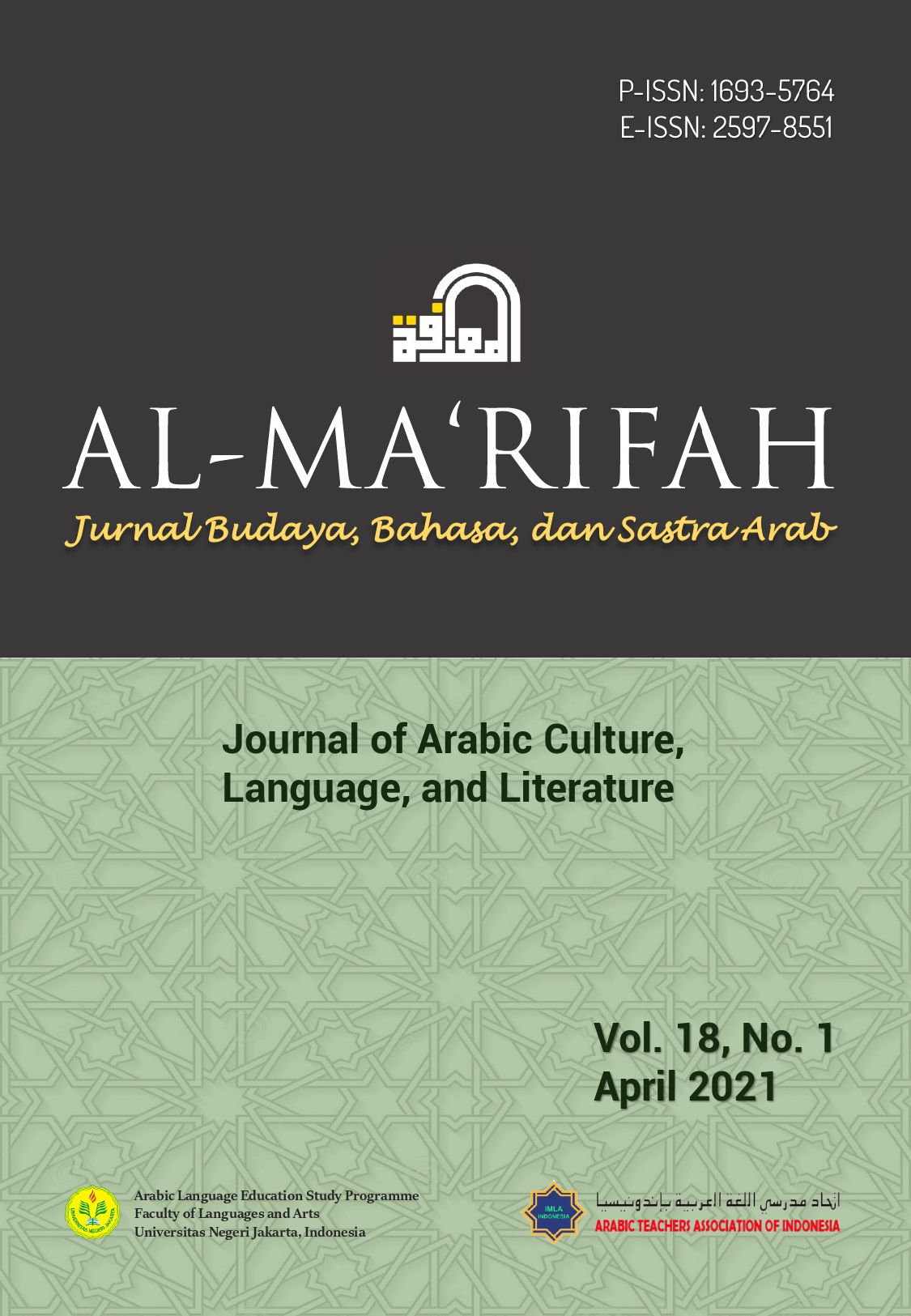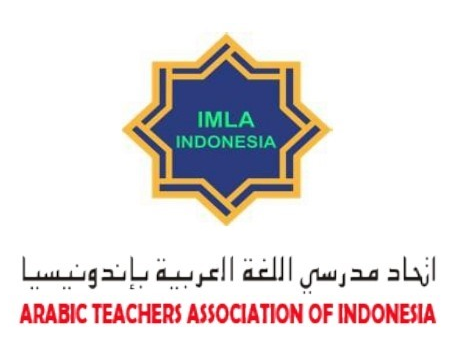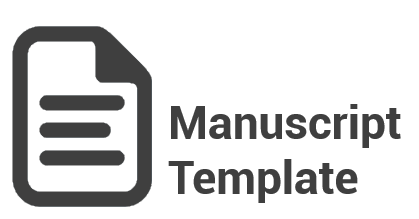Pembinaan Kompetensi Mengajar Bahasa Arab Berbasis European Profiling Grid
DOI:
https://doi.org/10.21009/almakrifah.18.01.02Keywords:
European Profiling Grid, teaching Arabic, Arabic future teacherAbstract
This study aims to compile a syllabus of the European Profiling Grid (EPG) based teaching competency development course to improve the teaching competence of students to become Arabic teachers with character and competitiveness. The method used in this study is a research and development approach by Richey and Klein’s model with the steps of planning, production, and evaluation. This study identified that some of the EPG aspects had been contained in several other subjects, such as Planning of Arabic Learning, Methodology of Arabic Learning, and Learning Media Arabic. However, there are still several aspects of the EPG that have not yet become a concern in several courses, such as intercultural competence. Thus, several aspects of the EPG such as intercultural competence, professional behavior, administration need to be integrated as a syllabus model for the EPG-based Arabic teaching competence development. The EPG-based teaching competency development syllabus needs to be accompanied by appropriate teaching materials and research instruments. Therefore, research on the development of the next model needs to be done so that the development of teaching competency syllabus based on the EPG can be applied in learning.
References
Goldin, G.A. (2002). Representation in Mathematical Learning and Problem Solving. Dalam L.D English (Ed). Handbook of International research in Mathematics Education(IRME). New Jersey: Lawrence Erlbaum Associates
Spektor-Levy, O., Eylon, B., & Scherz, Z. (2008). Teaching communication skills in science : Tracing teacher change. Teaching and Teacher Education, 24, 462–477.
Kress, G., Jewitt, C., Ogborn, J., & Tsatsarelis, C. (2001). Multimodal teaching and learning: The rhetorics of the science classroom. London, UK: Continuum
Lemke, J. L. (1999). Multimedia literacy demands of the scientific curriculum. Linguistics and Education, 10(3), 247–271.
Das, K. (2014). Need of Effective Communication Skills in Teaching Science. International Journal of Educational Research and Technology, 5(September), 40–42.
Arey, J & Linder, C. (2017). Social Semiotics in University Physics Education. Dalam David F. Treagust, D. F, Reinders Duit, R & Fischer, H.E (Eds), Multiple Representations in Physics Education (95-119). Gewerbestrasse: Springer International Publishing
Mallet, D. G. (2007). Multiple representations for systems of linear equations via the computer algebra system Maple. International Electronic Journal of Mathematics Education 2(1): pp. 16-32.
Kohl, P. B & Finkelstein, N. (2017). Understanding and Promoting Effective Use of Representations in Physics Learning. Dalam David F. Treagust, D. F, Reinders Duit, R & Fischer, H.E (Eds), Multiple Representations in Physics Education (213-253). Gewerbestrasse: Springer International Publishing
Berthold, K., Eysink, T.H.S., & Renkl, A. (2009). Assisting self-explanation prompts are more effective than open prompts when learning with multiple representations
William H. Schmidt, W.H, Cogan, L, Houang, R (2011). The Role of Opportunity to Learn in Teacher Preparation: An International Context. Journal of Teacher Education
Shulman, L. S. (1986). Those who understand: Knowledge growth in teaching. Educational Researcher, 15(2), 4-14
Grossman, P. L. (1990). The making of a teacher: Teacher knowledge and teacher education. New York: Teachers College Press
Sinaga, P. (2014). Pengembangan Program Perkuliahan Fisika Sekolah III Untuk Meningkatkan Kompetensi Menulis Materi Ajar Calon Guru Menggunakan Multi Modus Representasi. Disertasi UPI
De Lozano S R and Cardenas M 2002 Some Learning Problems Concerning the Use of Symbolic Language. Physics Science & Education 11 589–599
Ainsworth, S. E., Wood, D. J. & Bibby, P.A. (1998). Analysing the costs and benefits of multirepresentational learning environments. Dalam M. Van Someren, H.P.A. Boshuizen, T. de Jong ve P. Reimann (Eds.), Learning with multiple representations (120-134). Oxford: Elsevier Science
Downloads
Published
How to Cite
Issue
Section
License
Copyright (c) 2022 Fatwa Arifah

This work is licensed under a Creative Commons Attribution 4.0 International License.











